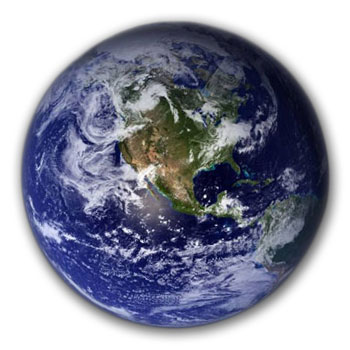WHY weather got weird – story NYT missed today

What the article does not explain is "Why." How do increased greenhouse gas levels (carbon dioxide, methane, etc) that cause warming of the Earth system, produce such weather extremes of all these varieties? Good question and one to which you should have an easy answer that makes sense, to share with others who may be in doubt. Try this:
First we need some clarity about what actually causes weather? Fundamentally it is just a few things:
- Heat received from sun.
- Spin of the Earth producing the prevailing winds (typically west to east in northern hemisphere; opposite in the southern, due to Coriolis effect).
- Different heating and cooling characteristics around the planet, e.g. land gets much hotter than ocean, but ocean retains heat far longer, ice sheets, surface rocks, volcanic hot spots.
- Finally there are the patterns of air and ocean currents that get established over time and move heat, e.g. the Gulfstream in the Atlantic Ocean, the atmospheric jet stream.
The interaction of all that is weather — no doubt extremely complex, full of billions of forces and variations daily.
Sunlight varies with the seasons of the year. The huge variations in air and ocean currents, affect cloud formations which both reflect and retain heat. Just an example of weather variations, but with predictable patterns year to year. Or at least until recently. Why the change? Here's the "cheat sheet" one page explanation of what is happening to cause what Tom Friedman calls "Weather Weirding."
Carbon dioxide and other greenhouse gases (eg methane) are amazingly powerful insulators that trap heat like the glass in a greenhouse. (This is NOT the same as the ozone issue, commonly confused.) That simple physics was discovered a bit before Al Gore btw — in 1826. We have increased greenhouse gases by 40 % above the normal range of 180-280 ppm (parts per million). The level is now at 393 ppm and going straight up. (At 450 ppm many experts believe it could go REALLY bad.)
The extra heat is mostly stored in the ocean. That is slowly but surely changing ocean currents, and "hot spots". Commonly followed examples are the "El Nino / La Nina" patterns in the Pacific. In turn such changes alter seasonal temperature patterns, winds, storms, etc. That is added to by the melting Arctic ice cap that is converting cold reflecting ice, to dark ocean that is substantially warmer. All of this changes the PATTERNS of heat circulation.
More moisture is in the air due to the warmer ocean. It comes down as torrential rain, causing floods in some places. The jet stream — the normal current of cold air starting in the Arctic and moving west to east has changed location, altering the traditional patterns of cold and warm air. That alters whether the excess moisture comes down as snow or rain. Once the moisture is wrung out of the air, downstream areas get dryness — drought over the long term.
The bottom line is that as long as we keep turning up the planet's temperature, the weather patterns will change. Frankly there is no way to predict year to year how that will manifest. We can predict that the ice sheets will melt faster and faster, raising sea level, and moving the coastline inland, decade after decade.
If you found this helpful, please share.
